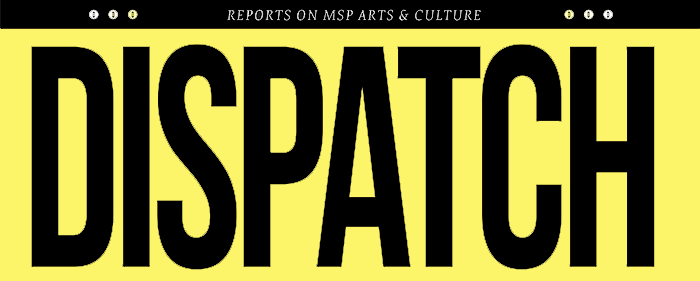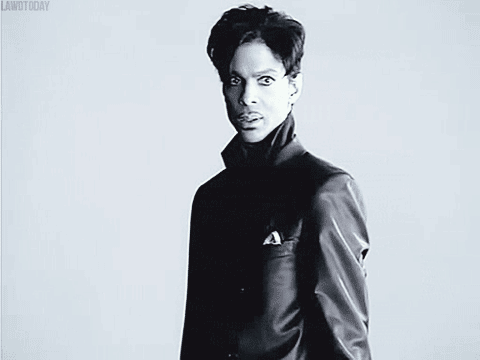Making art in Minneapolis-St. Paul happens in the shadow of Prince. DISPATCH encourages everyone to grapple with the Purple One’s output, especially his later work.
WORDS BY KATIE DOHMAN + TAYLOR CARIK
Many discussions rage through the offices of DISPATCH: What is Minneapolis-St.Paul as an arts outpost? What’s important to know for informed scene-goers? Is disillusionment really the driving force for most local creatives? How should everyone continue to feel about the biggest artist to come out of Minnesota?
The Estate—no, not one of Prince’s protégé projects, but the group that manages the late artist’s legacy, music, and Paisley Park—just put out two unreleased tracks, sparking up the conversation again. There’s the modern and mellow funk single ‘All A Share Together Now’ and a different take on ‘7,’ this version in E Flat and somehow maybe more interesting than the original. Such releases compel fans and followers (of which, in many ways, we all are) to hone their hot takes on Prince’s work and what it means for Minneapolis-St.Paul.
To approach Prince, DISPATCH editors frequently go back and forth on his work in phases (his and ours), including his early formative music, his well-known run of star-making hits, and then everything after the wildly successful Diamonds & Pearls album, a turning point for Prince’s music. Everything that followed Diamonds—his symbolism, his perfume, the opening of his Third Eye—makes up its own hot-debate collection.
On a practical level, it takes at least a full happy hour to tackle that much music. (There’s no debate that Prince was prolific, if not a little too prolific.) For the sake of publishing by deadline, DISPATCH’s Katie Dohman and Taylor Carik take a look at the best of everything that came from the later music, ‘Black Sweat’ off of 3121, his best later album, and use it to situate the new singles just released.
3121 is the only Prince album ever to debut at number one during his lifetime and became Prince’s first number one album since Batman in 1989. And we agreed ‘Black Sweat’ is the high point on that album.
Should we have any new Prince tracks from The Estate’s ongoing money-grab? Is his later music excusable? How do we judge the later work of the biggest Minnesotan artist of all time when he both faded away and burned out? Does the sexy awesomeness of ‘Black Sweat’ excuse the breadth and depth of Prince’s later mediocre music?
POINT: Excuse? Excuse YOU.
By Katie Dohman
I don’t remember a time without Prince. Dig if you will the picture of a too-lucky life where I was born in a time where I never went without the funk and the tease. Even now, I expect him to reappear, engulfed by fog-machine smoke, flanked by two all-legs dancers, slung guitar. A sly smile and a bat of the lashes, declaring he’s back.
How can you tell an artist that rose to such mythical heights as Prince that he needs an editor? Everyone needs an editor, says the editor. I’m a fan, but not an apologist. That said, I never stopped loving Prince, even as I drifted away in the ’90s, consumed with my love of grunge and punk and riot grrrl and well, there are quite a few albums that don’t do much for me in that post-Diamonds & Pearls catalog.
That changed, though, in June of 2004. Because, despite my lifelong love of Prince, his mythology, and his music, I actually never saw Prince live until then, well past the heights of Diamonds & Pearls. I I prepped for that show by listening to ‘My Name is Prince’ (ALSO ’90s Prince!) on repeat and remembering what made me love him in the first place.
I try not to use the phrase because it’s so overdone, but in this case it was true: That night blew my mind. He became less this fictional character—who, it should be noted, a lot of people had decided they could take potshots at despite his double-diamond status—but a funny, flirtatious, real person who performed like an entity simply not of this Earth. It rearranged my molecules, rendering me Jell-O at the knees from the power and the precision and, ooooh boy, that confident swagger. It was electric: His name was Prince. He did not come to fuck around.
My response to Prince is not, and never has been, particularly intellectual. It’s visceral. After that I dove more deeply into his catalog and went to it all—even to see his protégé, Tamar, in hopes of spotting him. I was rewarded with a small guitar cameo and then he disappeared. We drove to Paisley afterward, hoping for a long-awaited appearance, but he stayed gone. That was OK. Part of Prince’s power was the control of his mystique. You never knew what might happen, and that suspense was delicious. You took what you got, and you liked it. I think in those ’90s years, weighed down by his record-label fights and miffed at the way his hometown under-appreciated his work, he was doggedly trying to follow his artistic bliss, and I can respect that. Even if I don’t listen to it.
We all know there’s a lot in that vault, and it is a sign of the firehose of ideas Prince cooked up in his studio. Now the Estate is handing it out, bit by bit. I’m not sure how much of it I want to see or hear, to be honest, though because I have no self-control, I’ll click every link I’m offered. I think overall, regardless of what I think of each piece, we see someone who was committed to a creative process, which he appeared to measure by the miles of tape behind him.
When ‘Black Sweat’ was released–when 3121 dropped—it did feel a bit like when a thunderstorm breaks the humid, cicada-drone dome of late-August Minnesota. Here it was, the renaissance, and what felt like a later-career high-water mark: The minimalist, sexy swagger. To me, it is almost like if the mechanics of ‘Kiss’ and ethos of ‘Cream’ had a baby, a rekindled sign of a musical evolution that felt like it got a bit derailed and that many had been waiting for.
I was waiting for it. And I wasn’t the only white lady screaming when he counted 1, 2, 3.
COUNTERPOINT: WISH IT DID, BUT THE NEW TRACKS AREN’T TERRIBLE, WHICH IS A BIG WIN
By Taylor Carik
Before Prince fans get too fired up—I’m also a big Prince fan. I’ve long argued that we need a colossal Prince sentinel, 100 feet tall, towering over the Twin Cities, and once a year it rains down purple flowers to mark his transformation to the astral plane.
But it’s still important to give his proper due as an artist.
Prince came of age in Minneapolis; he grew up to be a hardcore Minnesotan.
In The Beautiful Ones, the free-flowing unfinished memoir Prince was working on with writer Dan Piepenbring when the iconic figure unexpectedly and unimaginably overdosed, he recounts the impact of the urban North Minneapolis music scene in the ’70s and ’80s and his family’s place in it. By the ’00s, Prince had become a full-fledged suburbanite, writing theme songs for the Minnesota Vikings and becoming a regular at Caribou Coffee.
Artists in Minneapolis-St.Paul can—and should—contend with a fundamental question about his Purpleness: Would Prince have made better music later in his career had he not self-isolated in Chanhassen, Minnesota? For me it’s a resounding ‘yes’ and both ‘Black Sweat’ and 3121 prove it.
Pitchfork, by no means a definitive benchmark but still instructive, said of 3121 that “the rock legend betters his work on comeback album Musicology, crafting a record that’s more varied and contains higher peaks than its predecessor.” They also gave it a 6.0 out of 10, both a slightly above average overall grade and a fairly high mark considering some of the other ratings given Prince’s later work.
‘Black Sweat’ and 3121 were a product of Prince’s time in NBA player Carlos Boozer’s home in Los Angeles. He famously transformed the property as only Prince could and then, when Boozer was upset, he famously transformed it back exactly how it was, as only Prince could. The departure in location also serves as a metaphor for his music of the era; It’s the exception that proves the rule. It’s not that Los Angeles is better than Minneapolis-St.Paul, it’s that the emancipated Prince surrounded himself with other top-notch talents and it helped him make some of his best music. Back in Chanhassen? Not so much.
Listeners can see Prince’s suburbanization in his post-Diamonds & Pearls output, they can feel it. For every hit of the dirty kick drum in ‘Black Sweat’ there’s a mid-tempo muzak funk song. Case in point: ‘All A Share Together Now’ is a little better, a little fatter, a little more kicking than most of the glut of Prince’s light funk—love to hear him yell ‘bass!’ like Chuck D—but the tune would still be right at home at a top-notch jazz fest and nowhere near the daring music that made him famous. The other track, ‘7 (E Flat Version)’, isn’t quite daring, but it’s at least interesting and clearly has the energy of earlier Prince songs (the version was recorded back in 1992) and shows how much more inventive his previous output stands, even more than everything else on 3121 besides ‘Black Sweat’.

